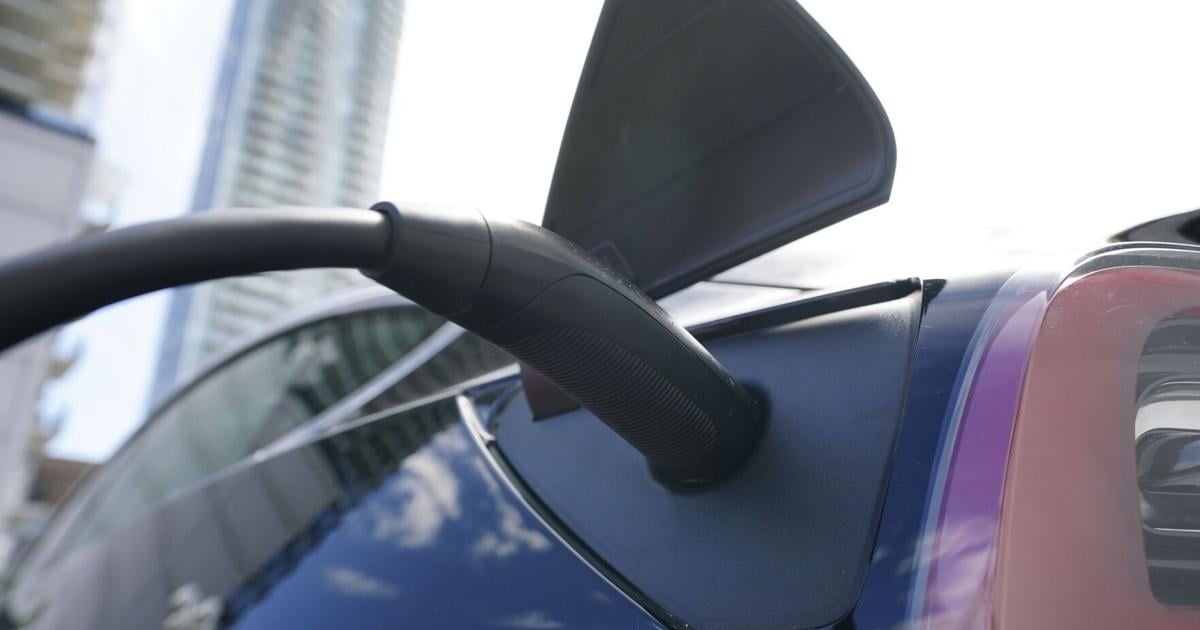The future of vehicle mobility in Canada continues to be electric, despite the current slump in the Canadian electric vehicle (EV) sector.
The longer that stall-out lasts the further Canada will fall behind in reducing its greenhouse gas emissions.
EV sales are soaring outside of Canada. Global EV sales jumped by 25 per cent last year, to about 17 million vehicles, according to the Paris-based International Energy Agency (IEA).
The economics of EV ownership are compelling. Keeping an EV on the road can save thousands of dollars a year in fuel costs for frequent drivers.
But after several years of impressive growth, Canadian EV sales have fallen to just 7.7 per cent of new vehicle registrations in July, down from the 2024 average of 17 per cent.
EVs are still too expensive. The average price of a new EV in Canada was $73,000 last year.
Ottawa, B.C. and Quebec suspended their EV rebate programs early this year, removing a powerful incentive for EV buyers. (Quebec has since restored its rebate system.)
And there are only 35,000 EV charging stations across Canada, far short of the country’s goal of more than 100,000.
With access to the U.S. market in doubt due to the Trump administration’s tariffs on Canadian automaking, several multibillion-dollar Canadian vehicle projects, notably EV battery plants, have been postponed.
And this week, General Motors said it will discontinue production of its BrightDrop EV delivery van in Ingersoll, Ont., idling Canada’s first full-scale EV manufacturing plant.
Also this week, U.S. truck maker Paccar (Peterbilt, Kenworth) was reported to be shifting production of vehicles for the U.S. market from its plant in Sainte-Thérèse, Que., to its U.S. plants ahead of Trump’s tariffs on medium- and heavy-duty trucks that take effect Nov. 1., with a loss of about 300 Quebec jobs.
And Stellantis N.V. (Chrysler, Dodge, Fiat) shocked the Canadian auto sector this month in announcing the relocation of production of its electric Jeep Compass SUV to Illinois from Brampton to get around U.S. tariffs on the Canadian auto industry.
Amid the gloom, however, Volkswagen AG remains on track to begin production in 2027 at the $7-billion battery plant it is building in St. Thomas, Ont.
And NextStar Energy has begun production of EV battery components at its new plant in Windsor, Ont. NextStar, a partnership of Stellantis and South Korea’s LG Energy Solution, expects to employ about 3,000 workers at the plant when it is fully operational.
The VW and NextStar projects were heavily subsidized by governments.
It is possible to imagine a more independent Canadian auto sector less subject to the whims of U.S. trade policy and the so-called Big Three automakers, GM, Stellantis and Ford Motor Co.
The Big Three, which have largely botched the EV transition, have come close to abandoning Canada. Their Canadian vehicle production has plunged by about 65 per cent since 2007, despite enormous subsidies from Canadian governments.
Meanwhile, Vietnamese homegrown EV manufacturer VinFast supplies its domestic market and exports its vehicles to Europe, the Middle East and to markets elsewhere in Asia Pacific.
Indonesia, Egypt and other countries import Chinese EV components for final assembly domestically.
And Turkey will soon be home to a $1.4-billion EV assembly plant built by BYD, the largest Chinese automaker.
Those are options for Canada, which has the technology, skilled workforce and manufacturing infrastructure to launch an EV automaker of its own that assembles EVs with imported components.
Eventually it would expand to design and engineer all-Canadian vehicles for export to non-U.S. markets, as VinFast does. The branch plants of Canada’s foreign-owned automakers export only to a U.S. market at risk of being closed to them.
The domestic market of almost 1.9 million vehicles bought in Canada in 2024 would support a new Canadian automaker with initial capacity of 125,000 to 200,000 units.
And Ottawa could lift or reduce its 100 per cent tariff on imported Chinese vehicles in return for a Chinese commitment to build cars in Canada, as Toyota and Honda have long done.
China has said it will lift its punishing counter-tariffs on Canadian canola, seafood and pork in that event.
The same invitation could be extended to other automakers such as South Korea’s Hyundai Motor and its Kia subsidiary, on the principle that if you sell cars in Canada you make cars here.
Kicking the Canadian EV sector into higher gear also requires an accelerated rollout of charging stations.
And while EV prices will come down with further technological advances — BYD’s entry-level Seagull retails for about $13,600 in China — rebates are still essential.
They could be reformulated as a blend of cash and tax breaks that are less fiscally onerous.
With passenger vehicles alone accounting for about 12 per cent of Canada’s total greenhouse gas emissions, the current limbo for the Canadian EV industry can’t last.
The cleaner air, reduced noise pollution, lower operating costs and smaller carbon footprint that come with EVs will prevail.



